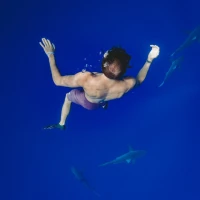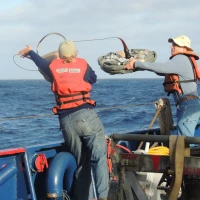Are you a scuba diving enthusiast? As exhilarating as exploring the underwater world can be, there are certain restrictions that divers must adhere to in order to ensure their safety. One such restriction is the prohibition on flying immediately after scuba diving. This may come as a surprise to some, as it is not immediately obvious why flying and scuba diving cannot be combined. In this article, we will explore the reasons behind this restriction and shed light on the potential risks involved in flying after scuba diving.
Understanding the Physics of Scuba Diving
Before diving into the reasons why flying after scuba diving is not recommended, let us first understand the physics behind scuba diving. When you go diving, especially to depths greater than 10 meters (33 feet), your body experiences an increase in pressure due to the weight of the water above you. This increase in pressure affects not only the air spaces in your body, such as your lungs and sinuses, but also the dissolved gases in your bloodstream.
The Role of Nitrogen in Scuba Diving
One of the primary gases that divers breathe underwater is air, which consists primarily of nitrogen and oxygen. As you descend deeper into the water, the increased pressure causes nitrogen to dissolve into your bloodstream. This process is known as nitrogen absorption. The longer you stay underwater and the deeper you dive, the more nitrogen gets absorbed into your body.
The Formation of Nitrogen Bubbles
When you ascend to the surface, the pressure decreases, allowing the excess dissolved nitrogen to come out of your bloodstream. However, if you ascend too quickly, the nitrogen may not have enough time to safely exit your body, leading to the formation of nitrogen bubbles. These bubbles can cause a condition known as decompression sickness, commonly referred to as “the bends.”
Decompression Sickness and Its Symptoms
Decompression sickness occurs when the nitrogen bubbles formed in your body during or after scuba Underwater diving techniques obstruct blood flow, resulting in various symptoms. These symptoms can range from mild, such as joint pain and skin rashes, to severe, including cognitive impairment, respiratory distress, and even paralysis. This condition can be life-threatening if left untreated.
The Connection Between Flying and Decompression Sickness
Now that we have a basic understanding of the risks associated with scuba Underwater diving dangers, let us delve into why flying can exacerbate the potential dangers of decompression sickness.
Changes in Atmospheric Pressure During Flight
When you ascend to higher altitudes during a flight, the atmospheric pressure decreases. This change in pressure affects the gases in your body, including the excess nitrogen that may still be present due to recent scuba Underwater diving certification activities. Just as ascending too quickly during a dive can lead to nitrogen bubbles forming in your body, ascending too quickly during a flight can have the same effect.
Expansion of Nitrogen Bubbles
Flying can cause the already formed nitrogen bubbles in your body to expand due to the decrease in pressure. The rapid expansion of these bubbles can lead to them blocking blood vessels, leading to serious health complications. The risk is particularly high if you have engaged in deep or repetitive dives before flying.
Increased Risk of Decompression Sickness
By combining the risks of nitrogen bubbles formed during scuba Underwater diving locations with the expansion of these bubbles during a flight, the potential for decompression sickness significantly increases. The effects can be more severe and occur more rapidly compared to if you were to remain on land after diving.
The Recommended Waiting Time Before Flying
To minimize the risk of developing decompression sickness, it is crucial to allow enough time for your body to eliminate excess nitrogen before undertaking any activities that involve changes in pressure, such as flying. The recommended waiting time before flying after scuba diving is 12 to 24 hours for a single dive and 18 to 24 hours for multiple dives or dives to greater depths.
Factors Affecting the Waiting Time
The waiting time may vary depending on various factors, including the depth and duration of the dive, the number of repetitive dives, and individual differences in how the body eliminates excess nitrogen. It is essential to consult a diving professional or adhere to the guidelines provided by your certification agency to determine the appropriate waiting time in each specific case.
Flying Before the Recommended Waiting Time
Flying before the recommended waiting time increases the risk of decompression sickness. Even if you feel fine immediately after a dive, it is important to remember that the symptoms of decompression sickness may not appear until several hours after exposure to changing pressures. Hence, it is better to err on the side of caution and wait the appropriate time before taking to the skies.
Precautions for Flying After Scuba Diving
While it is generally advised to avoid flying immediately after scuba diving, there are certain precautions you can take to reduce the risks associated with decompression sickness during air travel.
Stay Hydrated
Proper hydration plays a significant role in preventing decompression sickness. By drinking plenty of fluids before, during, and after diving, you help your body stay hydrated, facilitating the elimination of excess nitrogen. This habit should be maintained even during your flight.
Avoid Alcohol and Caffeine
Alcohol and caffeine contribute to dehydration, which can impede the elimination of excess nitrogen from your body. It is best to avoid consuming alcoholic beverages and caffeinated drinks, such as coffee and energy drinks, before and after diving and during your flight.
Dive Conservatively
Practicing conservative diving techniques can also minimize the risk of decompression sickness. Avoid pushing the limits of your dive profile and adhere to safe ascent rates. By taking a cautious approach to diving, you reduce the amount of excess nitrogen in your body, making flying after diving safer.
Plan Your Dives Wisely
If you have a flight scheduled shortly after your dive, it is crucial to plan your dives accordingly. Opt for shallower dives with shorter durations to minimize the absorption of nitrogen into your bloodstream. This way, your body can eliminate the excess nitrogen more efficiently during the recommended waiting time before flying.
Conclusion
While scuba diving opens up a world of adventure beneath the waves, it is important to understand and respect the safety guidelines associated with this activity. Flying immediately after scuba diving can increase the risk of developing decompression sickness due to the interactions between the excess nitrogen in your body and the changes in atmospheric pressure during a flight.
To ensure your safety, it is essential to allow enough time for your body to eliminate the excess nitrogen before flying. The recommended waiting time varies depending on factors such as the depth and duration of the dive, the number of repetitive dives, and individual differences in nitrogen elimination. It is advisable to consult diving professionals and adhere to the guidelines provided by your certification agency to determine the appropriate waiting time for flying after scuba diving.
By understanding the physics behind scuba diving, the risks of decompression sickness, and taking the necessary precautions, you can continue to explore the underwater world while ensuring your well-being both during and after your dives. Happy diving, and safe journeys!










